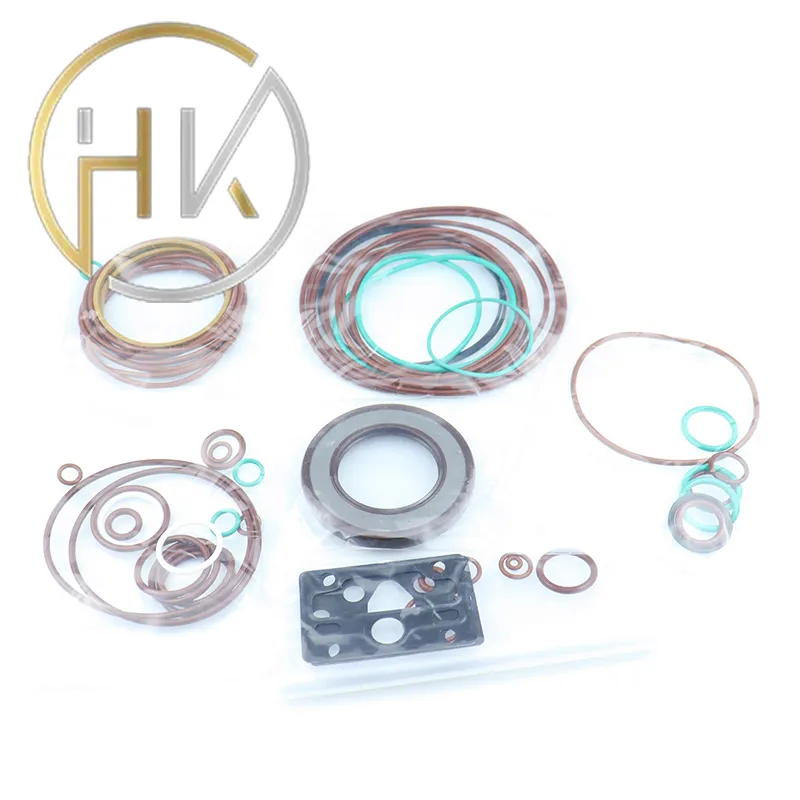Oct . 18, 2024 05:31 Back to list
Understanding the Role and Importance of Wiper Seals in Mechanical Systems
Understanding Wiper Seals Importance, Types, and Maintenance
Wiper seals are critical components in various mechanical systems, particularly in hydraulic and pneumatic devices. They play a pivotal role in ensuring that the machinery operates smoothly and efficiently by preventing leakage and contamination. This article will explore the importance of wiper seals, the different types available, and maintenance tips to ensure their longevity.
Importance of Wiper Seals
Wiper seals serve a dual purpose they keep fluids contained within a system while preventing external contaminants from entering. This is especially important in hydraulic systems where even the smallest amount of dirt or debris can lead to wear and tear, reducing the efficiency and lifespan of the equipment. In industries ranging from automotive to manufacturing, the reliability of wiper seals can directly impact productivity and operational costs.
Furthermore, wiper seals contribute to the safety of equipment operation. A seal that fails can lead to catastrophic failures, spills, or leaks, which can pose safety hazards to workers and damage to the environment. Therefore, ensuring that wiper seals are in optimal condition is not just a maintenance task; it's a critical safety responsibility.
Types of Wiper Seals
There are several types of wiper seals, each designed to meet specific application needs
. The most common types include1. U-Cup Seals These seals are designed in a U-shape and are particularly effective in preventing the backflow of fluids while allowing the passage of pistons or rods. Their design provides excellent sealing capabilities, making them suitable for high-pressure applications.
2. Lip Seals Lip seals incorporate a flexible lip that presses against the surface of the rod or cylinder. This design helps to wipe away contaminants while sealing the space between moving parts. Lip seals are commonly used in dynamic applications where there is relative motion between the parts.
3. O-Ring Seals While predominantly used as static seals, O-rings can also function effectively as wiper seals in certain applications. Their circular design allows them to be compressed between two surfaces, providing a robust barrier against leakage.
wiper seals

4. Flat Seals These seals are flat rings that prevent leakage between two surfaces. While not as common in dynamic applications, they can be used where motion is minimal and sealing against contamination is required.
Maintenance of Wiper Seals
Proper maintenance of wiper seals is essential to maximizing their lifespan and efficiency. Here are some tips for effective maintenance
1. Regular Inspection Conduct routine inspections of wiper seals to check for signs of wear. Look for cracks, tears, or deformation, which can indicate that a seal needs to be replaced.
2. Clean the Sealing Area Ensure that the surfaces around the seals are clean and free from dirt and debris. Contaminants can degrade the seal material over time and compromise its sealing capabilities.
3. Monitor Operating Conditions Pay attention to the operating environment of the machinery. Extreme temperatures, pressures, and exposure to harsh chemicals can shorten the lifespan of wiper seals. If any changes in operating conditions occur, consider evaluating the suitability of the current seals.
4. Replace Worn-Out Seals Promptly Don’t delay the replacement of damaged seals. Timely replacements can prevent more significant issues, such as leaks or equipment failures.
5. Choose the Right Material Choosing the right material for the application is crucial. Different materials offer varying degrees of resistance to heat, chemicals, and wear. For instance, polyurethane seals offer excellent abrasion resistance, while rubber seals are better suited for applications that involve low temperatures.
Conclusion
Wiper seals are integral components that protect machinery from leaks and contamination. Understanding their importance, types, and maintenance will help ensure the efficiency and reliability of hydraulic and pneumatic systems. By taking care of wiper seals, industries can reduce downtime, minimize maintenance costs, and promote safe operations. As technology advances, continued attention to seal design and materials will further enhance their performance, paving the way for safer and more efficient machinery in the future.
-
TCN Oil Seal Metal Ring Reinforcement for Heavy Machinery
NewsJul.25,2025
-
Rotary Lip Seal Spring-Loaded Design for High-Speed Applications
NewsJul.25,2025
-
Hydraulic Cylinder Seals Polyurethane Material for High-Impact Jobs
NewsJul.25,2025
-
High Pressure Oil Seal Polyurethane Coating Wear Resistance
NewsJul.25,2025
-
Dust Proof Seal Double Lip Design for Construction Equipment
NewsJul.25,2025
-
Hub Seal Polyurethane Wear Resistance in Agricultural Vehicles
NewsJul.25,2025
-
The Trans-formative Journey of Wheel Hub Oil Seals
NewsJun.06,2025
Products categories
















